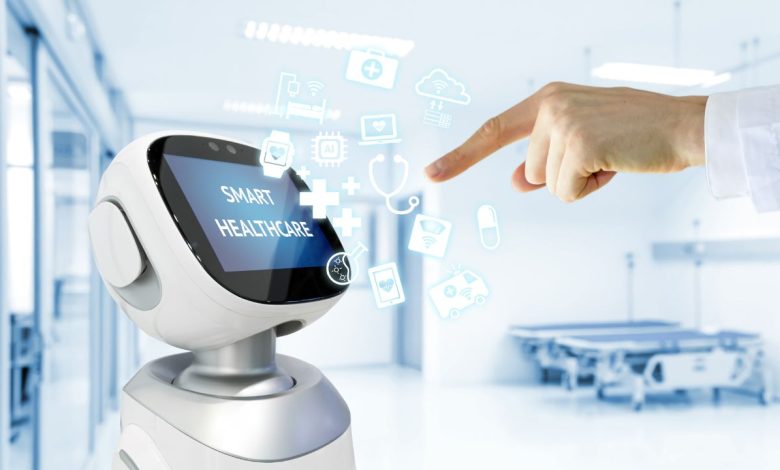The Role of Robotics in Elderly Care: A Growing Need

Introduction
As the global population ages, the demand for quality elderly care continues to rise. With this increasing need comes the exploration of innovative solutions to address the challenges faced by aging individuals. One such solution gaining momentum is the integration of robotics in elderly care…
Challenges in Elderly Care
Physical Limitations
Elderly individuals often experience physical limitations that affect their ability to perform daily tasks independently. Mobility issues, strength decline, and chronic conditions can significantly impact their quality of life.
Mental Health Concerns
Isolation, cognitive decline, and depression are common mental health challenges faced by the elderly. Limited social interactions and feelings of loneliness can exacerbate these issues, leading to a decline in overall well-being.
The Emergence of Robotics
Recent advancements in technology have paved the way for the widespread adoption of robotics in various industries, including healthcare. Robotics offer a promising solution to address the complex needs of the aging population by providing personalized assistance and support.
Benefits of Robotics in Elderly Care
Physical Assistance
Robotic devices equipped with sensors and actuators can assist elderly individuals with tasks such as mobility support, medication management, and household chores. These devices enable greater independence and autonomy, empowering seniors to maintain their daily routines.
Monitoring and Safety
Robotic systems integrated with monitoring technologies can track vital signs, detect falls, and provide real-time alerts in case of emergencies. By continuously monitoring the health and safety of elderly individuals, these systems offer peace of mind to both seniors and their caregivers.
Social Interaction
Companion robots equipped with conversational interfaces and emotional recognition capabilities can engage elderly individuals in meaningful interactions. These robots serve as companions, offering companionship, entertainment, and emotional support to combat feelings of loneliness and isolation.
Types of Robotic Assistance
Personal Care Robots
Personal care robots are designed to assist with activities of daily living, such as bathing, dressing, and grooming. These robots feature intuitive interfaces and adaptive functionalities to cater to the specific needs of each individual.
Companion Robots
Companion robots are equipped with advanced artificial intelligence algorithms that enable them to engage in natural conversations and respond to human emotions. These robots offer companionship and emotional support to elderly individuals, fostering social connections and reducing feelings of loneliness.
Monitoring Devices
Monitoring devices, such as wearable sensors and smart home technologies, enable remote monitoring of elderly individuals’ health and safety. These devices provide valuable insights into seniors’ daily activities and well-being, allowing caregivers to intervene promptly in case of any concerns.
Case Studies
Numerous case studies have demonstrated the effectiveness of robotics in improving the quality of life for elderly individuals. From robotic exoskeletons that enhance mobility to socially assistive robots that provide companionship, these technologies have shown promising results in various care settings.
Ethical Considerations
Privacy Concerns
The integration of robotics in elderly care raises important privacy considerations, particularly regarding the collection and use of personal data. Careful attention must be paid to ensure that seniors’ privacy rights are respected and protected throughout the deployment of these technologies.
Dependence on Technology
There is a risk of elderly individuals becoming overly dependent on robotic assistance, potentially diminishing their sense of self-reliance and resilience. It is essential to strike a balance between leveraging technology to enhance quality of life and preserving seniors’ autonomy and agency.
Future Prospects
The future of robotics in elderly care holds immense potential for further innovation and advancement. As technology continues to evolve, we can expect to see the integration of artificial intelligence and machine learning algorithms to create more intelligent and adaptive robotic systems. However, it is crucial to address potential challenges such as regulatory barriers, ethical concerns, and accessibility issues to ensure equitable access to these technologies for all seniors.
Conclusion
In conclusion, the role of robotics in elderly care is rapidly expanding, offering innovative solutions to address the challenges faced by aging individuals. From physical assistance to social interaction, robotics hold the promise of enhancing the quality of life for seniors and enabling them to age with dignity and independence. As we navigate the evolving landscape of healthcare technology, it is essential to prioritize ethical considerations and ensure that these advancements benefit all members of society.
Unique FAQs
Are robotics replacing human caregivers in elderly care?
While robotics can supplement and enhance the care provided by human caregivers, they are not intended to replace the human touch and empathy that is essential in elderly care.
How accessible are robotic technologies for elderly individuals with limited mobility?
Efforts are underway to design robotic devices that are user-friendly and accessible for individuals with diverse needs, including those with limited mobility. However, accessibility remains a key consideration in the development and deployment of these technologies.
What are some potential drawbacks of relying too heavily on robotic assistance in elderly care?
Over-reliance on robotic assistance may lead to a reduction in social interactions and physical activity, which are vital for maintaining overall well-being. It is essential to strike a balance between leveraging technology and preserving human connections.
How can caregivers ensure the privacy and security of elderly individuals when using monitoring devices?
Caregivers should prioritize the use of secure and encrypted technologies to protect seniors’ personal data and privacy. Additionally, clear communication and informed consent processes are essential to address any concerns and maintain trust.
What are the key considerations for policymakers and regulators regarding the integration of robotics in elderly care?
Policymakers and regulators must address issues related to safety, privacy, and ethical use of robotic technologies in elderly care. Collaborative efforts between government agencies, industry stakeholders, and advocacy groups are essential to establish guidelines and standards that promote the responsible deployment
of these technologies.



